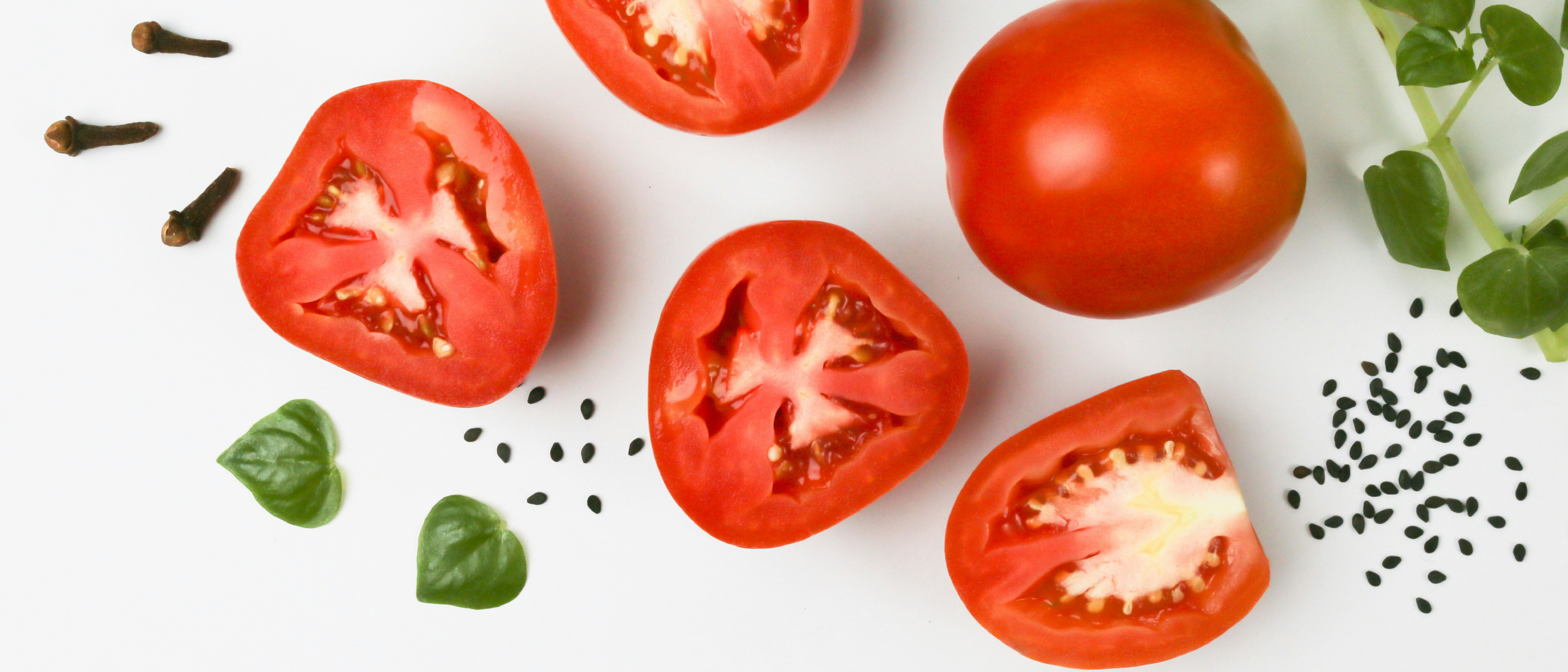What Happens to Your Body When You Eat Tomato Regularly
Posted on June 29, 2025 • 4 min read • 677 wordsDiscover the transformative effects of regular tomato consumption on your skin, heart, inflammation levels, and more, backed by recent scientific research.

You’ve likely added tomatoes to salads, sauces, or sandwiches without a second thought—but did you know this vibrant fruit (yes, technically a fruit!) could be quietly transforming your body? Packed with lycopene, vitamins, and antioxidants, tomatoes are more than just a kitchen staple. Recent studies reveal that regular tomato consumption can influence everything from your skin’s glow to your heart’s health. Let’s explore how this common ingredient becomes a powerful ally when you make it part of your daily diet.
Your Skin Will Thank You: Protection Against Aging and Sun Damage
One of the most visible benefits of eating tomatoes regularly is their impact on your skin. A 2024 meta-analysis of intervention trials found that tomato and lycopene supplementation significantly reduced skin pigmentation, erythema (redness), and markers of photoaging like MMP-1 (a collagen-degrading enzyme) while increasing skin thickness and density [1] .
Another study tracked 50 women taking a tomato-derived supplement for 12 weeks, reporting improvements in skin barrier function (measured by reduced transepidermal water loss), tonality, and firmness [2] . Think of tomatoes as a natural “internal sunscreen”—they won’t replace your SPF, but they add an extra layer of defense against UV damage.
A Healthier Heart: Reduced Risk of Cardiovascular Diseases
Your heart also reaps rewards from regular tomato intake. Lycopene, the pigment responsible for tomatoes’ red hue, is a potent antioxidant that neutralizes free radicals linked to artery damage. A 2022 review highlighted lycopene’s role in lowering LDL (“bad”) cholesterol oxidation and reducing inflammation, both key factors in cardiovascular disease (CVD) development [3] .
Meta-analyses of observational studies reinforce this: individuals with higher lycopene intake or serum levels showed a 26% lower risk of stroke and a 14% reduced risk of CVD overall [4] . Even processed tomato products, like sauce or paste, are effective—cooking breaks down cell walls, making lycopene more bioavailable.
Lower Inflammation: A Key to Long-Term Health
Chronic inflammation is a silent driver of many diseases, from arthritis to diabetes. A 2022 meta-analysis of clinical trials found that tomato consumption significantly reduced levels of tumor necrosis factor-alpha (TNF-α), a pro-inflammatory cytokine, by an average of 1.2 pg/mL [5] . While C-reactive protein (CRP) and interleukin-6 (IL-6) showed no significant changes, the reduction in TNF-α alone suggests tomatoes can help dampen chronic inflammation.
Digestive and Metabolic Support: Fiber and Beyond
Tomatoes are a good source of dietary fiber (about 1.2g per 100g), which supports gut health by feeding beneficial bacteria and promoting regular bowel movements. Their low calorie count (18 kcal per 100g) also makes them a smart choice for weight management. Additionally, the potassium in tomatoes (237mg per 100g) helps regulate blood pressure by counteracting sodium’s effects, further supporting cardiovascular health.
Food Nutrition: What’s Inside That Red Globe?
Here’s a breakdown of key nutrients in raw tomatoes (per 100g) and their daily recommended intakes (DRI) for adults:
| Nutrient | Amount per 100g | Daily Recommended Intake (Adults) |
|---|---|---|
| Vitamin C | 13.7mg | 75-90mg (women/men) |
| Vitamin A | 423 IU | 700-900 IU |
| Potassium | 237mg | 4,700mg |
| Lycopene | 2.5mg | No official DRI; 10-30mg/day suggested |
| Dietary Fiber | 1.2g | 25-38g |
Note: Lycopene absorption increases with cooking and fat (e.g., olive oil), as it’s fat-soluble.
Tips for Enjoying Tomatoes
- Pair with Healthy Fats: Add olive oil to tomato salads or cook tomatoes in avocado oil to boost lycopene absorption.
- Try These Recipes:
- Caprese Salad: Fresh tomatoes, mozzarella, basil, and a drizzle of balsamic glaze—simple and nutrient-rich.
- Roasted Tomato Soup: Roasting concentrates flavor and lycopene; blend with garlic and a splash of cream for a cozy meal.
- Tomato Salsa: Dice tomatoes with onions, cilantro, and lime for a low-calorie dip or taco topping.
Conclusion: The Tomato’s Transformative Power
From enhancing your skin’s resilience to protecting your heart, regular tomato consumption offers a host of benefits rooted in science. Whether you enjoy them raw in salads, cooked in sauces, or blended into soups, tomatoes are a versatile, accessible way to support your body’s health at multiple levels. So next time you reach for that tomato, remember—you’re not just adding color to your plate; you’re nourishing your future self.
Sources
-
Xiaofeng Zhang, Qilun Zhou, Yue Qi, et al. The effect of tomato and lycopene on clinical characteristics and molecular markers of UV-induced skin deterioration: A systematic review and meta-analysis of intervention trials. Critical Reviews in Food Science and Nutrition 64:3320-3335.(2024). doi:10.1080/10408398.2022.2164557 ↩︎
-
Elizabeth Tarshish, Karin Hermoni. Beauty from within: Improvement of skin health and appearance with Lycomato a tomato-derived oral supplement. Journal of Cosmetic Dermatology 22:4382-4389.(2023). doi:10.1111/jocd.15650 ↩︎
-
Sylwia Przybylska, Grzegorz Tokarczyk. Lycopene in the Prevention of Cardiovascular Diseases. International Journal of Molecular Sciences 23:1957.(2022). doi:10.3390/ijms23041957 ↩︎
-
Ho M Cheng, Georgios Koutsidis, John K Lodge, et al. Lycopene and tomato and risk of cardiovascular diseases: A systematic review and meta-analysis of epidemiological evidence. Critical Reviews in Food Science and Nutrition 59:1272-1284.(2019). doi:10.1080/10408398.2017.1362630 ↩︎
-
Gunawan Widjaja, Rumi Iqbal Doewes, Mohammad Rudiansyah, et al. Effect of tomato consumption on inflammatory markers in health and disease status: A systematic review and meta-analysis of clinical trials. Clinical Nutrition ESPEN 48:118-126.(2022). doi:10.1016/j.clnesp.2022.04.019 ↩︎


